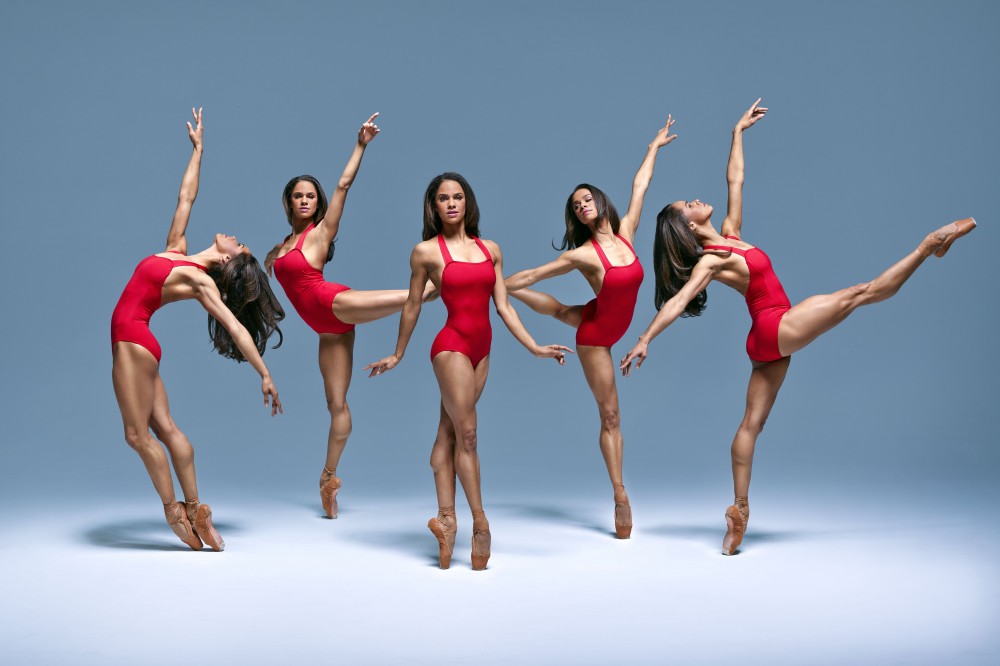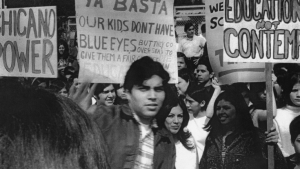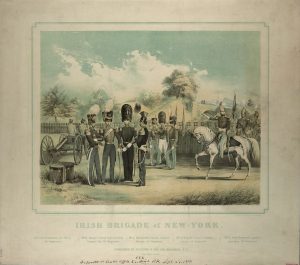In 2007, Misty Danielle Copeland became the first African-American ballerina to be a principal dancer with the American Ballet Theater (ABT) in twenty years. Since then, Misty Copeland has become a recognized icon for breaking down barriers in the art of dance. All her determination and resilience was built on the work of her mentor, Raven Wilkinson. Wilkinson was an African-American ballerina performing in the early days of the Civil Rights Movement. “She’s been through so much more than I could ever imagine, in the 1950s and experiencing racism in that time. It just felt like, ‘I can do this,'” Copeland expressed.1 Misty Copeland knew racism was not going to stop her from chasing her dreams.
As a young child, Misty Copeland expressed herself in the form of dance and instantly fell in love with the art. With her family’s hardship, dance was her escape and all her worries went away. Some of these worries included a lack of finances, a lack of comfortable living conditions, and a mother constantly changing boyfriends.2 Dance offered Copeland a way to relax and forget about all her problems. A prodigy by the age of thirteen, she surpassed the other dancers even with the many years they had ahead of her.
Once her training became more intense, Copeland began competing and receiving scholarships. At age fifteen, she was accepted with a full scholarship to the San Francisco Ballet’s Intensive Summer Program. In 2000, Copeland was also named the ABT’s Coca-Cola Scholar. After the program, the ABT invited Copeland to be part of their own studio company. She was the only African-American woman out of eighty dancers, an impressive feat since she was often challenged by her race and physique.3 “I had been told to pancake my skin a lighter color to fit in with the rest of the company,” she wrote.4 Nonetheless, she rose up with her extraordinary skill, and the lack of racial diversity came to the forefront, beginning to make waves in the ballet world.

Stephanie Webre challenged the status quo by casting two African Americans to play the leading roles in Swan Lake: Brooklyn Mack and Misty Copeland. Copeland and Mack were exquisite for their dancing. However, their performance was also admired for Webre’s ethnic inclusiveness, because dancers of color rarely get the chance for leading roles. According to Karen Sparks: “Many companies and schools endorse retrograde aesthetic values that place dancers of color at a disadvantage in the realms of hiring, castings, and promotions.”5 This discouraged African-American dancers from continuing on and studying ballet. For these reasons, there have been insufficient breaks for dancers of color.
After two decades, Misty Copeland became the first African-American soloist dancer to perform for ABT. Her story quickly made her a role model. “It made me feel really empowered not to let the negativity of racism even to this day affect me and my career. I can be strong and persevere and allow my talent to shine beyond the color of my skin,” she wrote.6 Misty Copeland became an advocate for “diversifying the field of ballet and creating access for dancers of varying racial and economic backgrounds.”5
Since receiving a leading role, Copeland has served on the advisory committee for the ABT’s Project Plié, which is a program “to increase racial and ethnic representation in ballet that offers guidance to dance instructors in diverse communities around the United States.”8 Project Plié’s objective is to discover the next “Misty Copeland” and invest in his or her training. The program is made up of a combination of corporations within the dance community to provide scholarships and many opportunities for dancers of color. Project Plié offers internships to encourage many dancers of various backgrounds to pursue their dreams of becoming professional ballerinas. In order to obtain a scholarship or internship, the student must attend many auditions and attract the attention of the advisory committee. Once selected, Project Plié interns are eligible to receive a scholarship to live during their time in New York City. The scholarship consists of roundtrip transportation, a metro card, and housing assistance. This organization could not be what it is today without Misty Copeland’s determination. She continues to advocate for dancers of color and dancers of unprivileged backgrounds to pursue their dreams of becoming a dancer. Today, several ballet companies have made progress in changing racial inequality in ballet. Just within the last decade, many companies have recruited dancers and have begun to change the complexion on the stage. Misty Danielle Copeland is breaking the racial barriers and paving the way for future ballerinas.9

- Encyclopedia Britannica, December 2014, s.v. “Misty Copeland,” by Naomi Blumberg. ↵
- Misty Copeland, Life in Motion: An Unlikely Ballerina (New York: Aladdin, 2014), 20. ↵
- Encyclopedia Britannica, December 2014, s.v. “Misty Copeland,” by Naomi Blumberg. ↵
- Misty Copeland, Life in Motion: An Unlikely Ballerina (New York: Aladdin 2014), 20. ↵
- Encyclopedia Britannica, June 2015, s.v. “Addressing Racial Diversity in Ballet,” by Karen Sparks. ↵
- Misty Copeland, Life in Motion: An Unlikely Ballerina (New York: Aladdin 2014), 127. ↵
- Encyclopedia Britannica, June 2015, s.v. “Addressing Racial Diversity in Ballet,” by Karen Sparks. ↵
- Encyclopedia Britannica, June 2015, s.v. “Addressing Racial Diversity in Ballet,” by Karen Sparks. ↵
- Rhonesha Byng, “Misty Copeland Inspires Project Plie, A Diversity Initiative Launched By ABT To Fine More Black Ballerinas,” Huffpost, September 2013, https://www.huffingtonpost.com/2013/09/19/misty-copeland-project-plie-_n_3950827.html. ↵



60 comments
Reese Lujan
The determination that Misty Copeland obtained is absolutely inspiring. She had her sites set on being the most amazing dancer this world has ever seen. She was striving for greatness and that’s what she became. She worked harder than anyone in this world. She wasn’t selfish either she gave back and helped those that aren’t able to do what she’s capable of.
Natalia Flores
This is a really good article and I am interested in Project Plie that Copeland started. It’s a shame that the world of dance is still not as diverse as the world it is in. Unfortunately, that can also be seen in other fields as well and it is more along the lines of what they are looking for. As the article mentions, many fields of audition such as dance look at the appearance of a performer so race is a factor at auditions. This same problem is also, unfortunately, found in the opera world.
Samuel Ruiz
I always love to read about stories of people who, despite hard times, managed to make a very successful career for themselves. With the unfortunate racism problem that went on at the time, it must have been difficult and discouraging to get up and go make career. However, Misty took the alternate route and got up everyday to work at her dream, ultimately becoming a role model.
Maria Esquivel
No one should feel like the color of their skin should be an obstacle to their success. Misty Copeland is a true role model because she never let her skin tone define how successful she would be, and that is beyond incredible. I found it really interesting how she served on the advisory committee to provide opportunities for dancers of colors. Great Job and incredible images!
Edgar Ramon
Being one of the top Ballerinas in the nation is no easy objective, Misty’s family must have felt so proud of her for getting to where she got. Misty got to where she got with hard work and dedication, as I would agree that all the other ballerinas who are there got there. My little sisters were very involved in ballet also, not anymore but when they were reaching their late teens. My sisters weren’t discriminated against for being Mexican, they just decided that the Russian kids they were competing against were extremely competitive.
Hanadi Sonouper
I appreciate this article for showcasing the true meaning of being diverse in a sport that is usually seen as one image “fits all.” Misty Copeland is indeed an influential human being, for paving the way through the artistic sport of ballet. She broke down barriers of race to accomplish of her dream of becoming a successful ballerina. She has overcome multiple factors of adversity, but as stated in the article she did not want to loose sight of her dream, and with her vision to make a difference she was then the first African American ballerina.
Luis Morales
This was a great article. The introduction by itself was excellent. It was interesting to read about her life and success she had. It is always interesting to read about her ability to break down barriers in the world of sports, especially ballet one of the oldest sports in history. Misty has paved the way for many girls and boys to follow their own passions. What I like about Misty was that she had the drive to prove everyone wrong and be successful.
Erin Vento
This was a really great story about inclusion in the ballet arena (which most people never really think about) and an incredibly strong woman perseverance. I love that Misty didn’t just stop when she broke barriers for herself, but continued to encourage others to not let everyday racism stand in their way. I really think that this was so so well written and engaging, and the photos you used are so beautiful.
Natalie Childs
Misty is truly inspiring, be it in ballet or anything else. She shows that nothing, not even the color of her skin, can hold her back from doing her absolute best and achieving her dreams. I loved the inclusion of the Project Plié and think that it is incredible that Misty is giving back and wants to help those that may not have the chances she had reach their goals within ballet.
Cristina Cabello
This is a really good article about Misty Copland. I love reading these kinds of articles. To where people strive to make a difference for their rights. Misty made it a goal to become an amazing dancer and she wanted the world to see. Therefore, she had to work the hardest to become that. I don’t think I could ever do what Misty does. Overall I really liked how you developed the story of Misty.